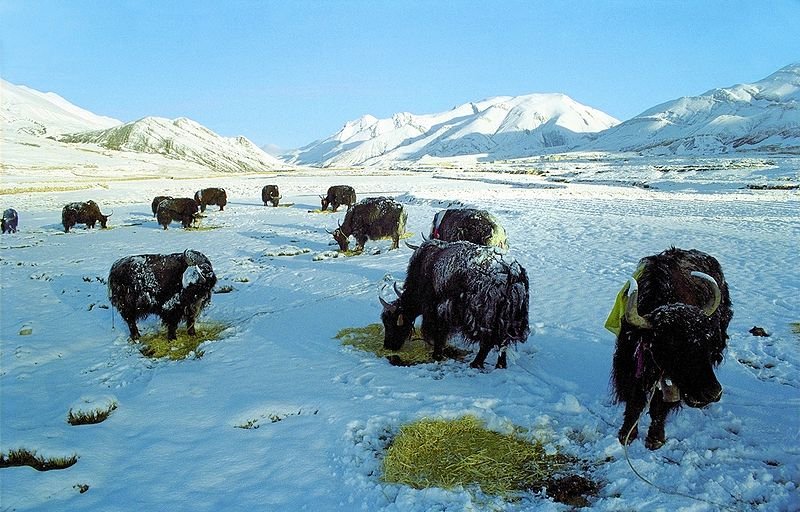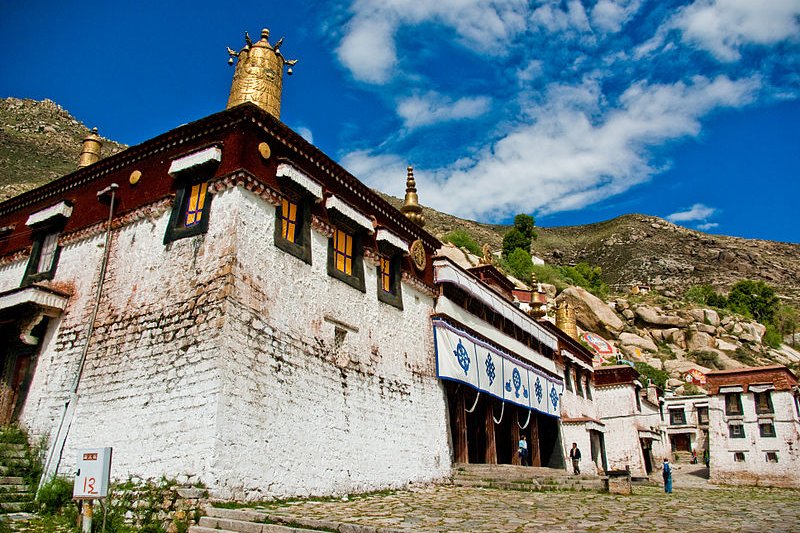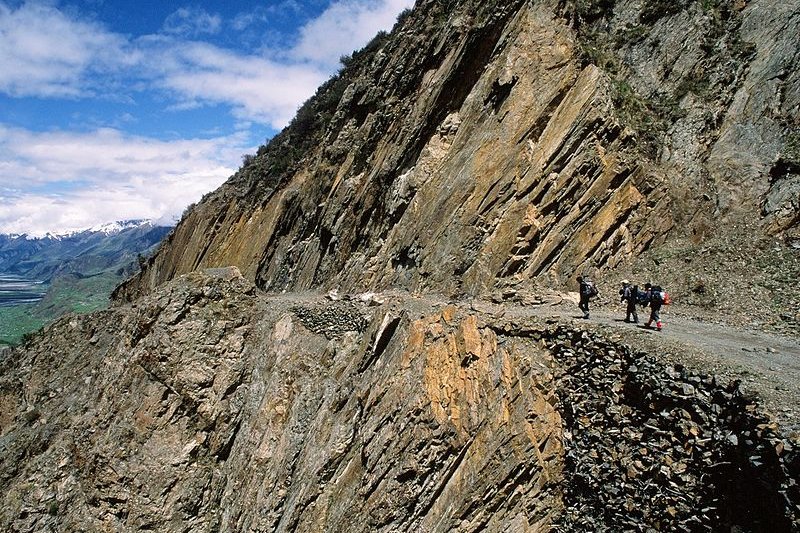 Yaks in the snow, Dzakar Chu Valley, Tibet
Yaks in the snow, Dzakar Chu Valley, TibetSource: https://commons.wikimedia.org/wiki/File:Overnight_snow_%28_kha_wa%29_in_Valley_of_Gara.jpg
Author: Jan Reurink

Author: Jan Reurink

Tibet (Simplified Chinese: 西藏) is an autonomous region of China. It is also called Xizang Autonomous Region. It roughly follows the borders of the government of Tibet in 1950. Covering an area of 1,228,400 sq km (474,300 sq mi), it is the second largest regional division of China after Xinjiang.
The Tibet Autonomous Region borders Xinjiang Autonomous Region to the north, Gansu Province to the northeast, Sichuan Province to the east and Yunnan Province to the southeast. It also shares international borders with Myanmar to the southeast, and with India, Nepal and Bhutan to the south.
 Sera Monastery, Tibet
Sera Monastery, TibetSource: https://commons.wikimedia.org/wiki/File:Sera_Monastery4.jpg
Author: Antoine Taveneaux

Author: Antoine Taveneaux

Tibet has a population of 2.9 million people, ranking it 32nd of the 33 regions of China. Its capital and largest city is Lhasa. The region had a GDP in 2009 of CNY 44.1 billion (32nd position) and per capita GDP of CNY 15,141 (28th position).
Much of the Tibet Autonomous Region is located on the Tibetan Plateau, which has an average height of 4,572 meters (15,000 ft). Mount Everest, the tallest mountain in the world, is on the border between Tibet and Nepal.
Going to Tibet
Tourists were only allowed into Tibet since the 1980's. There are now flights from different cities in China to Lhasa, as well as land routes from Nepal. Ancient Tea Horse Road, Tibet
Ancient Tea Horse Road, TibetSource: https://commons.wikimedia.org/wiki/File:Jeff_Fuchs-Ancient_Tea_Horse_Road.jpg
Author: Nupgong6

Author: Nupgong6

Tourist Sights in Tibet
- Potala Palace
Main Cities of Tibet
- Lhasa - regional capital
 Latest updates on Penang Travel Tips
Latest updates on Penang Travel Tips
 Map of Roads in Penang
Map of Roads in Penang
Looking for information on Penang? Use this Map of Roads in Penang to zoom in on information about Penang, brought to you road by road.
Copyright © 2003-2025 Timothy Tye. All Rights Reserved.

 Go Back
Go Back